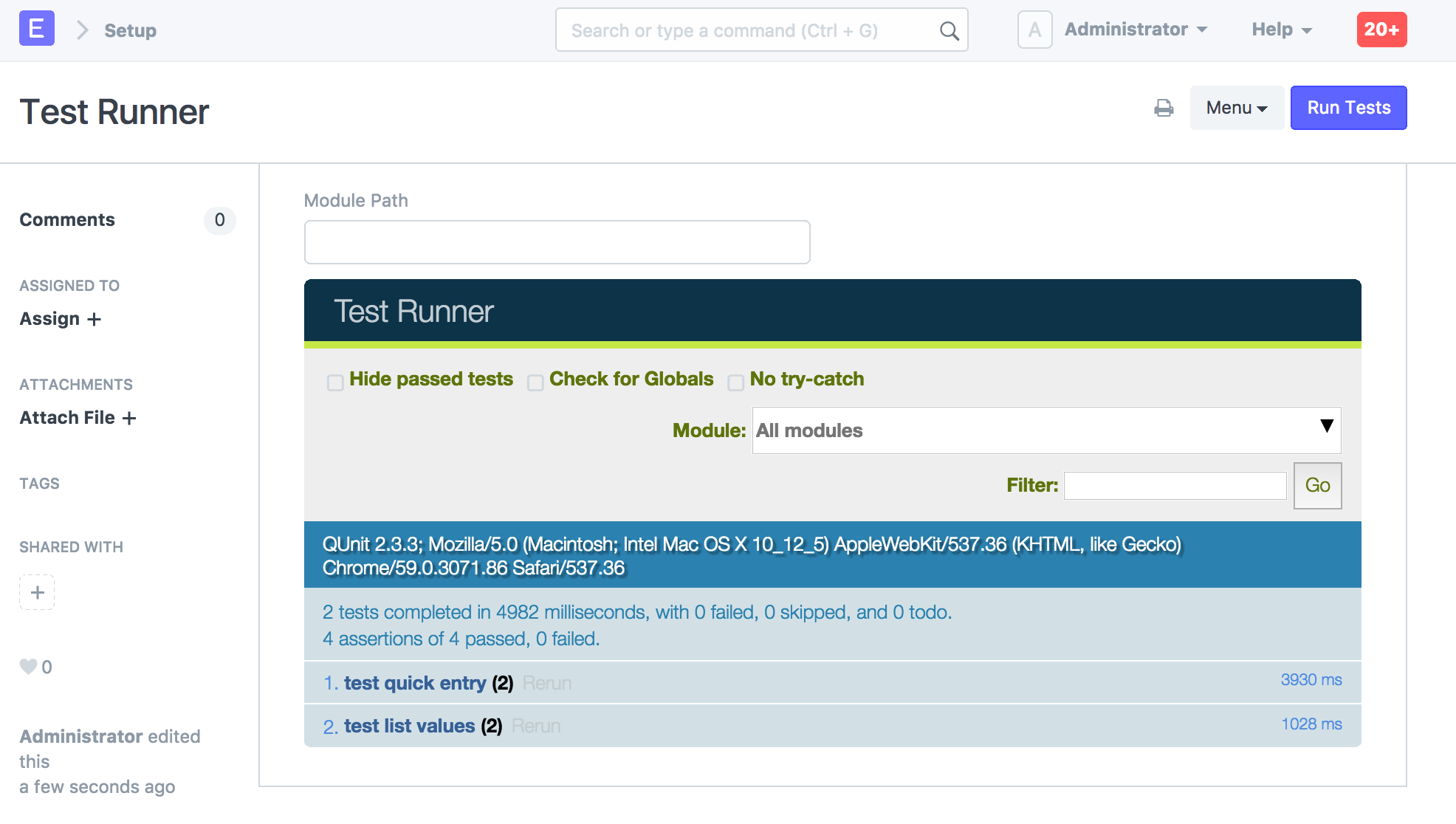UI Testing with Frappe API
You can either write integration tests, or directly write tests in Javascript using QUnit
QUnit helps you write UI tests using the UQuit framework and native frappe API. As you might have guessed, this is a much faster way of writing tests.
Test Runner
To write QUnit based tests, add your tests in the tests/ui folder of your application. Your test files must begin with test_ and end with .js extension.
To run your files, you can use the Test Runner. The Test Runner gives a user interface to load all your QUnit tests and run them in the browser.
In the CI, all QUnit tests are run by the Test Runner using frappe/tests/test_test_runner.py

Running Tests
To run a Test Runner based test, use the run-ui-tests bench command by passing the name of the file you want to run.
bench run-ui-tests --test frappe/tests/ui/test_list.js
This will pass the filename to test_test_runner.py that will load the required JS in the browser and execute the tests
Debugging Tests
To debug a test, you can open it in the Test Runner from your UI and run it manually to see where it is exactly failing.
Test Sequence
In Frappe UI tests are run in a fixed sequence to ensure dependencies.
The sequence in which the tests will be run will be in tests/ui/tests.txt
file.
Running All UI Tests
To run all UI tests together for your app run
bench run-ui-tests --app [app_name]
This will run all the files in your tests/ui folder one by one.
Example QUnit Test
Here is the example of the To Do test in QUnit
QUnit.test("Test quick entry", function(assert) {
assert.expect(2);
let done = assert.async();
let random_text = frappe.utils.get_random(10);
frappe.run_serially([
() => frappe.set_route('List', 'ToDo'),
() => frappe.new_doc('ToDo'),
() => frappe.quick_entry.dialog.set_value('description', random_text),
() => frappe.quick_entry.insert(),
(doc) => {
assert.ok(doc && !doc.__islocal);
return frappe.set_route('Form', 'ToDo', doc.name);
},
() => assert.ok(cur_frm.doc.description.includes(random_text)),
// Delete the created ToDo
() => frappe.tests.click_page_head_item('Menu'),
() => frappe.tests.click_dropdown_item('Delete'),
() => frappe.tests.click_page_head_item('Yes'),
() => done()
]);
});
Writing Test Friendly Code with Promises
Promises are a great way to write test-friendly code. If your method calls an aysnchronous call (ajax), then you should return an Promise object. While writing tests, if you encounter a function that does not return a Promise object, you should update the code to return a Promise object.